Leonardo Chiarello
Jamming Resilient Indoor Factory Deployments: Design and Performance Evaluation
Feb 02, 2022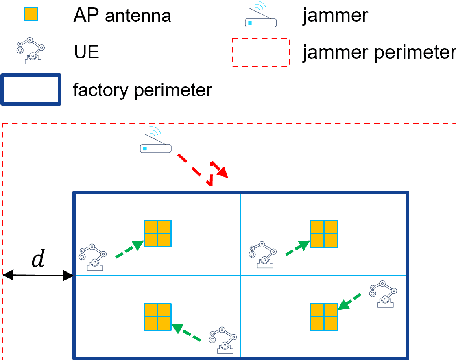
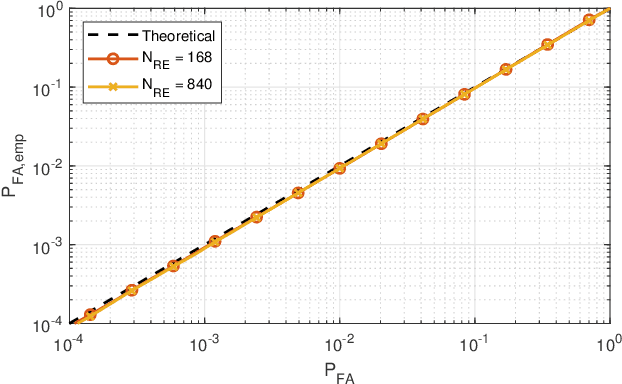
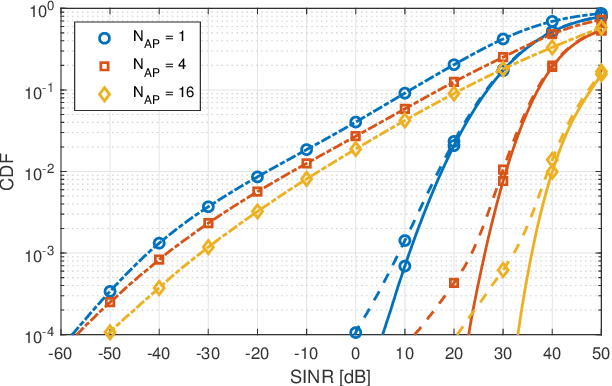
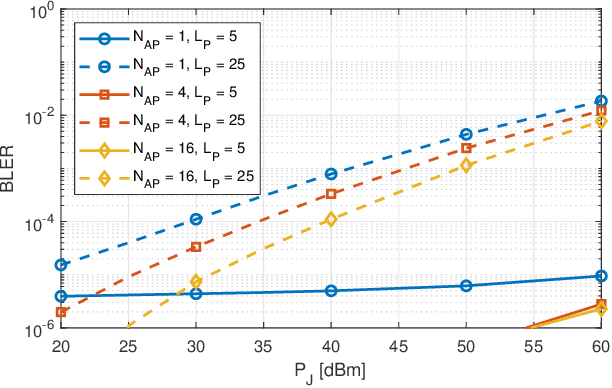
Abstract:In the framework of 5G-and-beyond Industry 4.0, jamming attacks for denial of service are a rising threat which can severely compromise the system performance. Therefore, in this paper we deal with the problem of jamming detection and mitigation in indoor factory deployments. We design two jamming detectors based on pseudo-random blanking of subcarriers with orthogonal frequency division multiplexing and consider jamming mitigation with frequency hopping and random scheduling of the user equipments. We then evaluate the performance of the system in terms of achievable BLER with ultra-reliable low-latency communications traffic and jamming missed detection probability. Simulations are performed considering a 3rd Generation Partnership Project spatial channel model for the factory floor with a jammer stationed outside the plant trying to disrupt the communication inside the factory. Numerical results show that jamming resiliency increases when using a distributed access point deployment and exploiting channel correlation among antennas for jamming detection, while frequency hopping is helpful in jamming mitigation only for strict BLER requirements.
Jamming Detection With Subcarrier Blanking for 5G and Beyond in Industry 4.0 Scenarios
Jun 15, 2021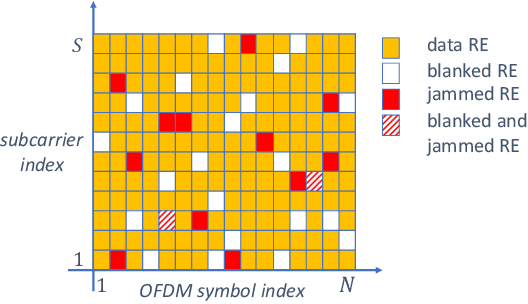
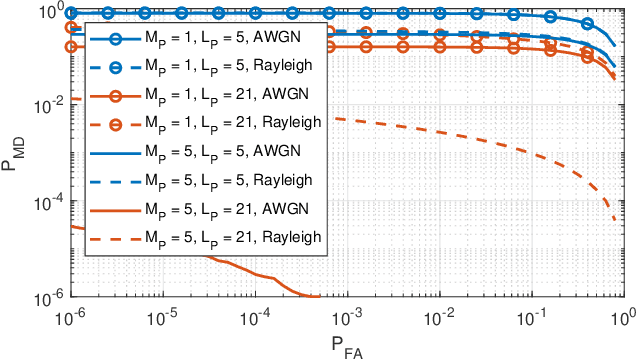
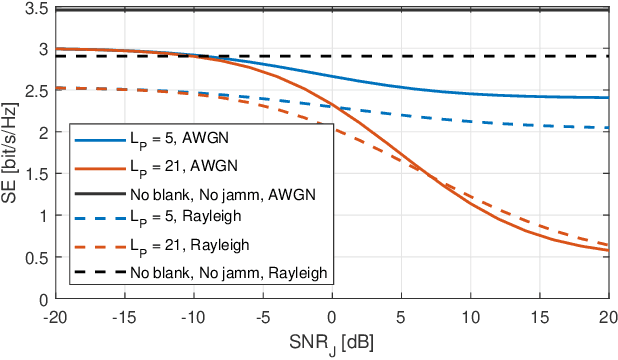
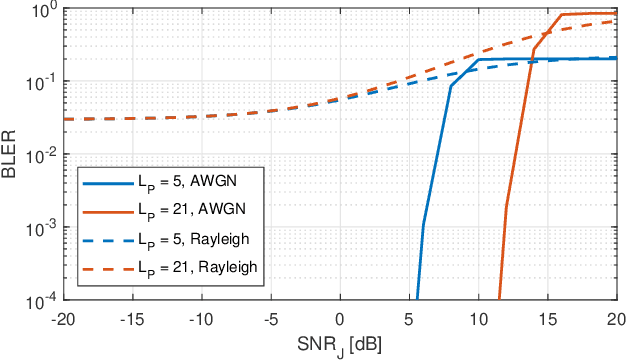
Abstract:Security attacks at the physical layer, in the form of radio jamming for denial of service, are an increasing threat in the Industry 4.0 scenarios. In this paper, we consider the problem of jamming detection in 5G-and-beyond communication systems and propose a defense mechanism based on pseudo-random blanking of subcarriers with orthogonal frequency division multiplexing (OFDM). We then design a detector by applying the generalized likelihood ratio test (GLRT) on those subcarriers. We finally evaluate the performance of the proposed technique against a smart jammer, which is pursuing one of the following objectives: maximize stealthiness, minimize spectral efficiency (SE) with mobile broadband (MBB) type of traffic, and maximize block error rate (BLER) with ultra-reliable low-latency communications (URLLC). Numerical results show that a smart jammer a) needs to compromise between missed detection (MD) probability and SE reduction with MBB and b) can achieve low detectability and high system performance degradation with URLLC only if it has sufficiently high power.
 Add to Chrome
Add to Chrome Add to Firefox
Add to Firefox Add to Edge
Add to Edge